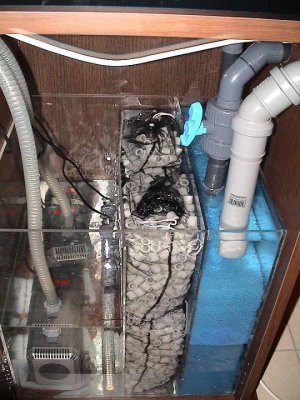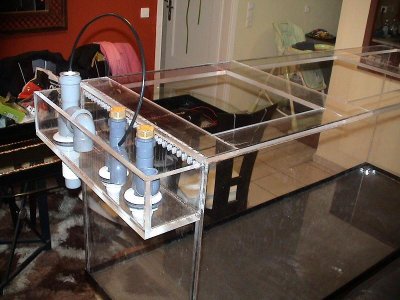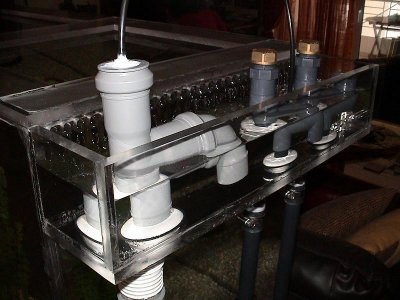Using two 1" siphon lines, whose combined flow capability is GREATER than that of the "failsafe" 1" pipe--short circuits the failsafe. Realistically, however, since the 1" pipe at siphon will flow more than what you are probably going to send to the tank, that
could be a moot point, but none-the-less.
The long horizontal run may cause starting issues, for the siphon on the left, with air getting trapped in the horizontal run. This is a design modification, and the results are not predictable. Also, balancing two siphons for equal flow, considering they are configured differently, could present a challenge also.
Perhaps it needs to be pointed out again, that THIS drain system (the BeanAnimal) incorporates a
single siphon, a
single open channel, and a
single dry emergency, rather than two siphons, and a dry emergency. Since your design is a HUGE modification, it cannot be expected to perform as
this system does, nor can it be expected to be failsafe. (see above)
There is a way to incorporate the BeanAnimal (note* Bean you need to come up with a shorter name for this system other than S&FOS BA perhaps for Bad A**

) system into your corner overflows. A single siphon and a single open channel in the right overflow (1" and 1.25" respectively, and a single 1" dry emergency in the left overflow, configured with a 45° down slope, to prevent starting issues.












